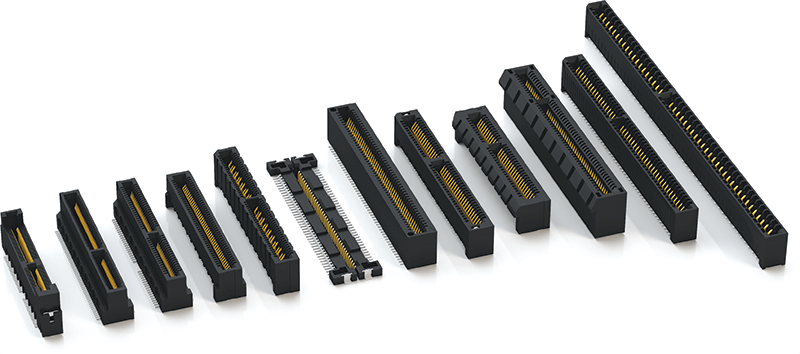
Benefits of Edge Card Sockets
Whereas most Samtec board-to-board connectors are two-piece systems, edge card connectors provide an interface between two boards with just one connector.
There are several reasons why a designer may choose an edge card socket over a two-piece system.
First, edge card connectors are great for modular designs; designers can easily upgrade or configure their system by swapping out the board. Also, they make it easy to plug and unplug a mating card that may require more cycling than standard PCBs
They are high-speed: first, because of the contact design, and second, there’s one less connector and a shorter signal path. More about the high-speed contact in three paragraphs …
And they save money because there’s only one connector.
Samtec high-speed, edge card interconnect systems are used just about everywhere, including computers and peripherals, telecom, datacom, industrial equipment, medical, test and measurement, instrumentation, and military and aerospace, among others.
Our Most Popular Edge Card Product
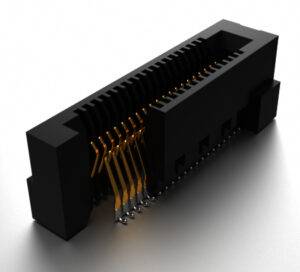
Our most popular edge card connector is the HSEC8. It’s popular because of the high-speed, high-cycle Edge Rate® contact. The thin, narrow, cut edges of the Edge Rage contact are positioned side-by-side. This minimizes the parallel surface areas, which reduces broadside coupling and crosstalk.
Also, the contact is simply designed for higher bandwidth. The contact geometry is designed, simulated, and optimized for 50 and 100-ohm systems given the contact pitch and appropriate grounding schematics.
The 8 in HSEC8 means it’s 0.8mm pitch. It saves real estate on the motherboard, but it’s not so small that it’s difficult to route traces. It’s micro, but it’s manageable.
And finally, there’s all kinds of design flexibility with the HSEC8:
- they are available in three orientations – vertical, right angle, and edge mount
- optional latches to hold the mating board in place
- there’s latches for mating cable assemblies
- with optional board locks, weld tabs for the mechanical strength of the part on the board
- it can accommodate mating card thicknesses of .062” or .093”
- there’s a differential pair option that is rated at 56 Gbps, PAM4
- there’s a power, signal combo design
- a pass-through design where the mating board can pass through the HSEC8 and the main board
- and we have designs to compensate for board and connector misalignment
Speaking of variety, edge card socket strips are available on 0.50 mm, 0.635 mm, 0.80 mm, 1.00 mm, 1.27 mm, and 2.00 mm pitch. Orientations include vertical (surface mount), right angle, edge mount, and pass-through. Popular design options include signal/power combos, press-fit tails, rugged weld tabs, locks and latches, and PCI Express® interconnects.
Samtec Edge Card Products:
- HSEC8 (0.80 mm pitch)
- HSEC8 Right Angle Connector
- HSEC8 Edge Mount Connector
- HSEC8 Power Combo Connector
- HTEC8 Rugged Design
- HSEC1 (1.00 mm pitch)
- MEC1 (1.00 mm pitch)
- PCI Express Edge Cards
- MEC8 (0.80 mm pitch)
- MEC8 -RA (right angle, 0.80 mm pitch)
- MECF (1.27 mm pitch)
- HSEC6 (0.60 mm pitch)
- MEC6 (0.635 mm pitch)
- SAL1 (Through-board socket; you gotta see it to understand)
- MEC2 (2.00 mm pitch)
- BEC5C (High-Density Edge Card socket)
- MECT (0.80 mm SFP+ Edge Card Connector)
- High-Speed Board-To-Board Application Guide
You might also be interested in this blog about the history of edge card connectors.
Something I Learned While Writing This Blog
Obviously, the headline of this blog is based on the sonnet that begins, “How do I love thee? Let me count the ways.” I conducted a web search to find the Shakespeare poem or sonnet that started with that line. Much to my surprise, that’s not Shakespeare!
It’s taken from Sonnets from the Portuguese; a series of 44 sonnets which were written by Elizabeth Barrett Browning during the course of her courtship with the poet Robert Browning. Sonnet 43 is perhaps the most famous, with the opening line “How do I love thee? Let me count the ways.”
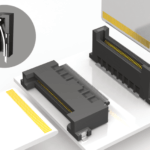
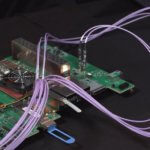
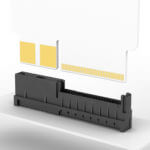
Leave a Reply